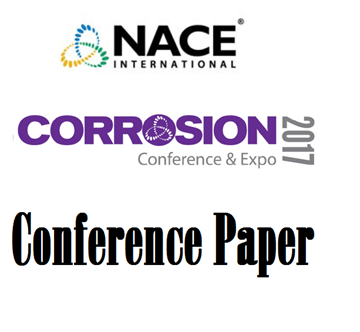Search
Individual Conference Papers
View as
Sort by
Display
per page
Effects of Chloride Contamination on Coatings Performance
Product Number:
41212-686-SG
Publication Date:
2012
$20.00
Effects of Chloride on Copper Corrosion in Reducing Conditions
Product Number:
51319-13134-SG
Publication Date:
2019
$20.00
Effects of Corrosion and Wildfires on Galvanized Steel Towers: A Case Study with Wildfire and Corrosion Sensors
Product Number:
51324-20844-SG
Publication Date:
2024
$40.00
Effects of Different Corrosion Control Systems and Fluid Services on AST Inspection Practices
Product Number:
51317--9332-SG
ISBN:
9332 2017 CP
Publication Date:
2017
$20.00
Effects of Environmental Exposure on Mechanical and Barrier Properties of an Aircraft Coating System
Product Number:
51324-21200-SG
Publication Date:
2024
$40.00
Effects of Minor Alloying Elements on the Metal-Dusting Behavior of Ni-Based Alloys
Product Number:
51320-14657-SG
Publication Date:
2020
$20.00
Effects of NaCl on Corrosion and Cracking Susceptibility of OCTG C110 Steel in Sour Environments
Product Number:
51323-19010-SG
Publication Date:
2023
$20.00
Effects of pH Buffer on the Corrosion Behavior of C110 Tubing in Formate Completion Fluid With the Mix of CO2 at High Temperature
Product Number:
51319-13354-SG
Publication Date:
2019
$20.00
Effects of Renewable Natural Gas and Hydrogen on Microbially Influenced Corrosion and Souring in Underground Gas Storage
Product Number:
51324-21146-SG
Publication Date:
2024
$40.00
Effects of Scratch Defects in Epoxy Coating of Steel Reinforcing Bars Embedded in Structural Concrete
Product Number:
41216-968-SG
Publication Date:
2016
$20.00
Effects of Silicon Carbide in Corrosion of A36 Gas Shielded Flux Core Welding
Product Number:
51324-21163-SG
Publication Date:
2024
$40.00
Effects of temperature on hydrogen absorption into steel bars by cathodic charging in solution containing ammonium thiocyanate
Product Number:
51323-18931-SG
Publication Date:
2023
$20.00











